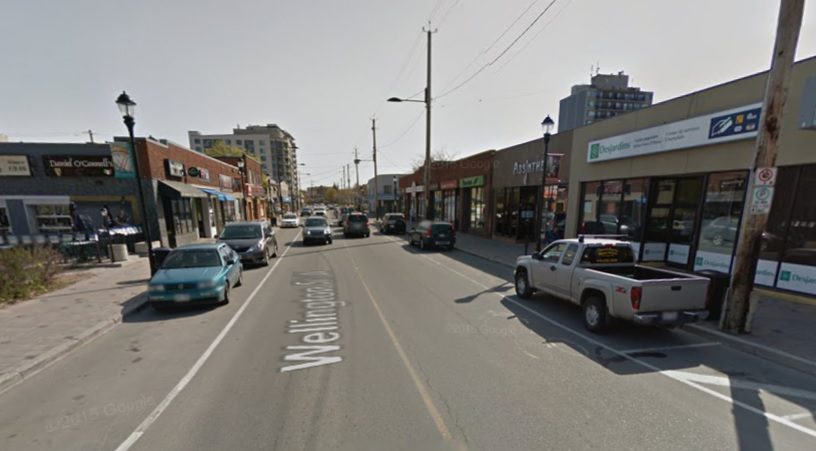Sharrows, “dooring zone” on Ottawa’s Wellington Street corridor receiving a mixed bag of responses
The asphalt of Wellington Street West in Ottawa looks strikingly different these days, thanks to an effort by city staff to keep cyclists protected as they ride through the dense, occasionally unpredictable corridor.


The asphalt of Wellington Street West in Ottawa looks strikingly different these days, thanks to an effort by city staff to keep cyclists protected as they ride through the dense, occasionally unpredictable corridor. To quote the Ottawa Community News, it’s a paint job that looks “busy.”
It’s also an addition to Ottawa infrastructure that’s receiving mixed reviews.
Down the middle of the road, on a stretch of Wellington between Parkdale Avenue and Holland Avenue, Ottawa’s public works department painted a tight array of sharrows and introduced a “dooring zone” within a metre of on-street parking — literally, the words “dooring zone” painted in tall block letters on the road. The new features were added on the weekend of July 11, and as cycling and pedestrian safety co-ordinator Shawn McGuire told the Ottawa Community News, they’re in response to complaints from local cyclists that riding through the area is “dangerous and uncomfortable.”
“Obviously the [residents] wanted something more substantial like bike lanes,” McGuire said, “but there’s just no room. We were scraping our heads trying to come up with something better than just the sharrows in the centre.”
Judging from the response of many of those residents, though, the new street markings don’t solve much. The “dooring zone,” in particular, has presented all new problems for cyclists in Canada’s capital. For one, cyclists find themselves craning their necks to the right to read the horizontally-painted words. For another, there’s the implication of the words “dooring zone” themselves, as cyclists have complained. Rather than suggesting that it’s an area in which a rider runs the risk of going head over handlebars, “dooring zone,” to some, reads like an indication of where dooring a cyclist is actually permissible for drivers.
Along with a sentiment from cyclists that the painted infrastructure isn’t enough, there’s also a heated degree of anti-cycling vitriol from motorists. It’s the hope that the Wellington Street makeover may change those attitudes, though, that councillor Jeff Leiper says makes the pilot project worthwhile.
“Drivers are becoming habituated to cyclists on the road and they’re paying more attention to when they pass,” Leiper argued. “The more of these awareness things we can put in place, the more we’ll see acceptance grow and we’ll see behaviours change.”
While no plans are on the table just yet to expand the project elsewhere in the city, McGuire said that its use will be monitored over the next year to see if such positive changes as Leiper describes take root. If so, they may be seen in other Ottawa neighbourhoods.
